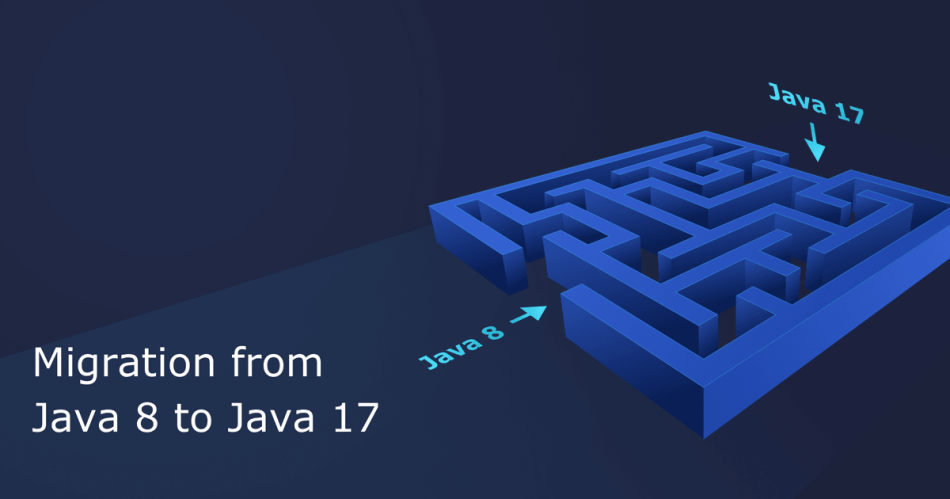Steps to Successfully Upgrade Spring Boot from Java 8 to Java 17
 Tuanhdotnet
Tuanhdotnet4 min read

1. Analyze Current Application Compatibility
1.1 Assess Codebase Readiness
Before starting the upgrade, ensure your application is free from deprecated APIs and follows modern coding practices. Java 17 introduces stricter checks and removes several APIs that were deprecated in Java 8.
Example: Handling Removed java.util.Date Methods
In Java 17, several methods from java.util.Date have been removed or discouraged. If your code
Date today = new Date();
System.out.println(today.getYear());
You need to replace it with the modern java.time API:
LocalDate today = LocalDate.now();
System.out.println(today.getYear());
This ensures compatibility and adheres to best practices for date-time handling.
1.2 Verify Dependencies
Spring Boot applications rely heavily on dependencies. Some older libraries may not support Java 17. Use tools like mvn dependency:tree to audit your dependencies.
Action Plan:
- Identify libraries and their supported Java versions.
- Replace outdated libraries with actively maintained alternatives.
2. Upgrade Java Version and Dependencies
2.1 Update Java Version
Update the JDK in your build system. For Maven, modify the pom.xml file to specify Java 17:
<properties>
<java.version>17</java.version>
</properties>
Ensure your local development environment and CI/CD pipelines are also updated to use JDK 17.
2.2 Upgrade Spring Boot
Spring Boot versions before 2.5.x are not compatible with Java 17. Upgrade to the latest compatible Spring Boot version by updating the spring-boot-starter-parent in your pom.xml:
<parent>
<groupId>org.springframework.boot</groupId>
<artifactId>spring-boot-starter-parent</artifactId>
<version>2.7.6</version>
</parent>
Run mvn clean install to verify the compatibility of your dependencies.
3. Address Code-Level Changes
3.1 Adapt to Java 17 Language Features
Java 17 introduces features like sealed classes, records, and switch expressions. While these features are optional, using them can modernize and simplify your code.
Example: Using Switch Expressions
Old-style switch:
String result;
switch (day) {
case "MONDAY":
case "FRIDAY":
result = "Workday";
break;
default:
result = "Weekend";
}
Modern switch in Java 17:
String result = switch (day) {
case "MONDAY", "FRIDAY" -> "Workday";
default -> "Weekend";
};
This reduces boilerplate and improves readability.
3.2 Handle Deprecated Features
Features deprecated in Java 8 may no longer be available in Java 17. Refactor your code to use recommended alternatives.
Example: Replace PermGen with Metaspace Java 8 removed the PermGen memory area, which was replaced by Metaspace. If your application’s configuration still references PermGen, update it:
# Old (Java 8)
-XX:PermSize=256m
-XX:MaxPermSize=512m
# New (Java 17)
-XX:MetaspaceSize=256m
-XX:MaxMetaspaceSize=512m
4. Update Build and Test Pipelines
4.1 Configure CI/CD for JDK 17
Ensure your CI/CD pipeline uses JDK 17. For example, in GitHub Actions:
jobs:
build:
runs-on: ubuntu-latest
steps:
- name: Set up JDK 17
uses: actions/setup-java@v3
with:
java-version: '17'
4.2 Extensive Testing
Testing is critical after an upgrade. Focus on:
- Unit tests: Validate core functionality.
- Integration tests: Ensure dependencies interact correctly.
- Performance tests: Measure the impact of the JDK upgrade.
5. Deploy and Monitor the Application
Gradual Rollout
Roll out the upgraded application to a staging environment first. Monitor logs and performance metrics for anomalies.
Monitor Production
After deployment, use tools like Spring Boot Actuator and distributed tracing systems (e.g., Zipkin, Jaeger) to monitor the application.
6. Conclusion
Upgrading from Java 8 to Java 17 is a critical step in modernizing your Spring Boot application. It ensures your application remains secure, performant, and future-proof. By following the steps outlined above, you can minimize risks and maximize the benefits of the upgrade.
Have questions or need further guidance? Feel free to comment below!
Read more at : Steps to Successfully Upgrade Spring Boot from Java 8 to Java 17
0
Subscribe to my newsletter
Read articles from Tuanhdotnet directly inside your inbox. Subscribe to the newsletter, and don't miss out.
Written by

Tuanhdotnet
Tuanhdotnet
I am Tuanh.net. As of 2024, I have accumulated 8 years of experience in backend programming. I am delighted to connect and share my knowledge with everyone.